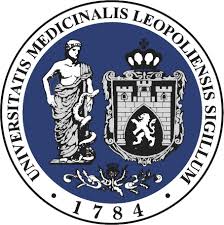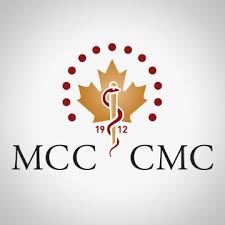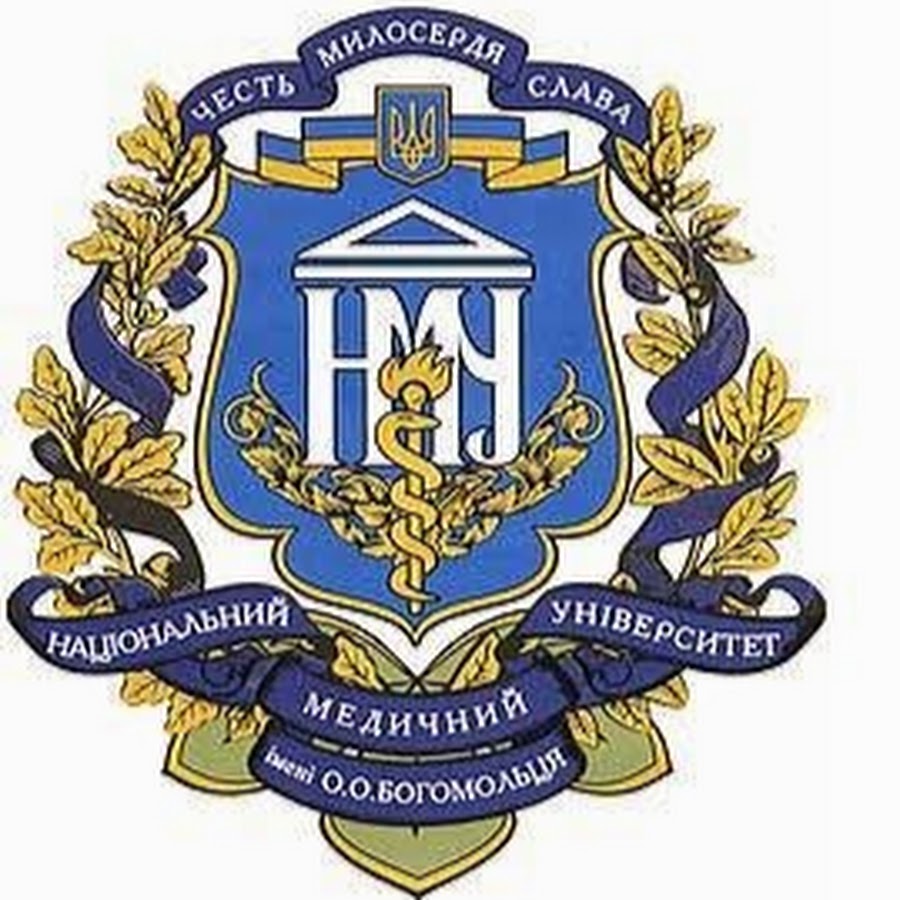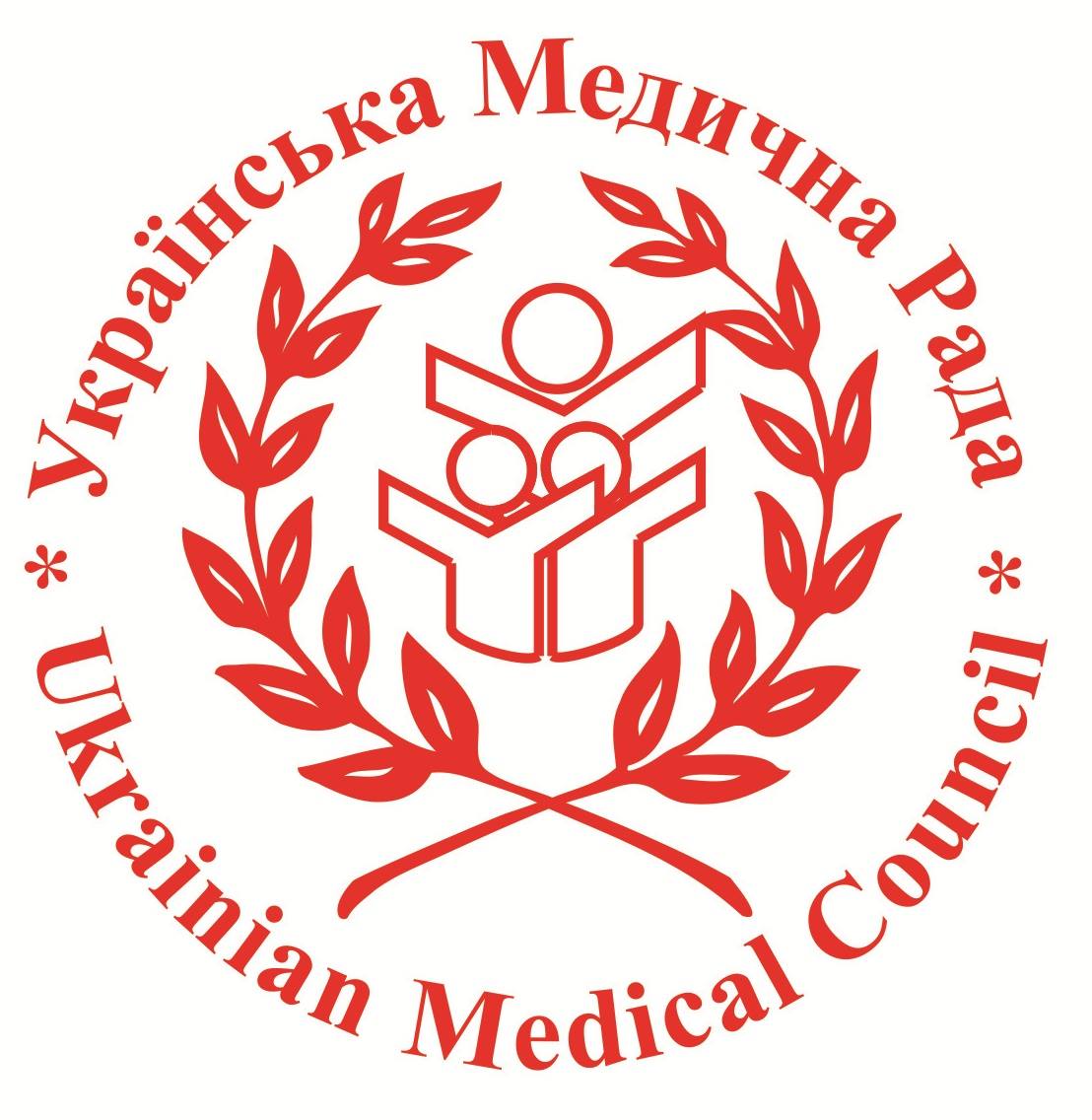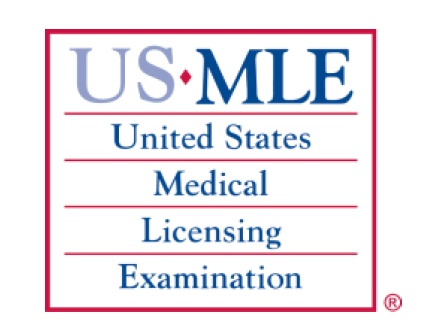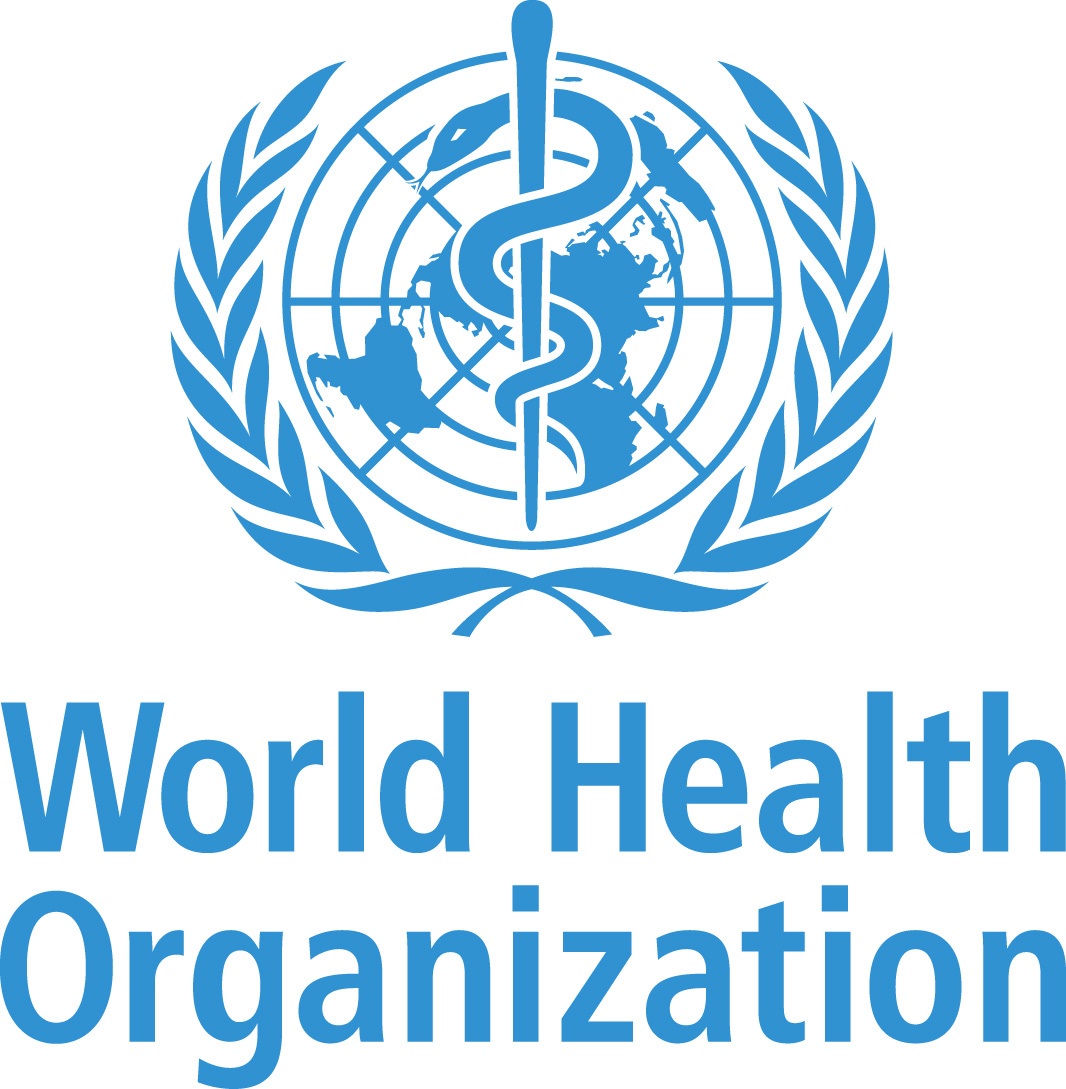CHINA MEDICAL UNIVERSITY
LOCATION AND INTERNATIONAL AIRPORT IN THE CITY
LOCATION OF CHINA MEDICAL UNIVERSITY, STUDY MBBS IN CHINA
No. 91號,
Xueshi Road, North District,
Taichung City, Taiwan 404
MAP LOCATION
We MBBSUNIVERSITIES.COM guarantee you admission in the best medical colleges of CHINA with the best fee package.
We the team of doctors in MBBSUNIVERSITIES.COM had enough research through the medical colleges in CHINA and we will guide you to select the colleges for MBBS in CHINA
We guarantee you the cheapest package and minimum consultancy charges for MBBS in CHINA MEDICAL UNIVERSITY is Recognised by WHO and Medical council of India, we are the No. 1 MBBS admission In Abroad Education guideline providers in India because we are doctors not agents. Just call our doctors because doctors can guide students better than agents - 1800-123-5619
They will give you information to select the Best Universities & be Your Complete Guide
They will provide you Step-by-step Guide for MBBS in Abroad and will help you to get DIRECT ADMISSION IN MBBS
TOP MEDICAL COLLEGE IN CHINA, CHINA MEDICAL UNIVERSITY. DIRECT ADMISSION IN MBBS IN CHINA MEDICAL UNIVERSITY.
About the country - CHINA
China, officially the People's Republic of China (PRC), is a country in East Asia and the world's most populous country, with a population of around 1.404 billion. Covering approximately 9,600,000 square kilometers (3,700,000 sq mi), it is the third- or fourth-largest country by total area. Governed by the Communist Party of China, the state exercises jurisdiction over 22 provinces, five autonomous regions, four direct-controlled municipalities (Beijing, Tianjin, Shanghai, and Chongqing), and the special administrative regions of Hong Kong and Macau.
China emerged as one of the world's earliest civilizations, in the fertile basin of the Yellow River in the North China Plain. For millennia, China's political system was based on hereditary monarchies, or dynasties, beginning with the semi-legendary Xia dynasty in 21st century BCE. Since then, China has expanded, fractured, and re-unified numerous times. In the 3rd century BCE, the Qin reunited core China and established the first Chinese empire. The succeeding Han dynasty, which ruled from 206 BC until 220 AD, saw some of the most advanced technology at that time, including papermaking and the compass, along with agricultural and medical improvements. The invention of gunpowder and movable type in the Tang dynasty (618–907) and Northern Song (960–1127) completed the Four Great Inventions. Tang culture spread widely in Asia, as the new Silk Route brought traders to as far as Mesopotamia and Horn of Africa. Dynastic rule ended in 1912 with the Xinhai Revolution, when a republic replaced the Qing dynasty.
Since the introduction of economic reforms in 1978, China's economy has been one of the world's fastest-growing with annual growth rates consistently above 6 percent. As of 2016, it is the world's second-largest economy by nominal GDP and largest by purchasing power parity (PPP). China is also the world's largest exporter and second-largest importer of goods. China is a recognized nuclear weapons state and has the world's largest standing army and second-largest defense budget. The PRC is a permanent member of the United Nations Security Council as it replaced the ROC in 1971, as well as an active global partner of ASEAN Plus mechanism. China is also a leading member of numerous formal and informal multilateral organizations, including the Shanghai Cooperation Organization (SCO), WTO, APEC, BRICS, the BCIM, and the G20. In recent times, China has been widely characterized as a global superpower.
FOREIGN RELATIONS OF CHINA.
The PRC has diplomatic relations with 175 countries and maintains embassies in 162 countries. In 1971, the PRC replaced the Republic of China as the sole representative of China in the United Nations and as one of the five permanent members of the United Nations Security Council. China was also a former member and leader of the Non-Aligned Movement, and still considers itself an advocate for developing countries.] Along with Brazil, Russia, India and South Africa, China is a member of the BRICS group of emerging major economies and hosted the group's third official summit at Sanya, Hainan in April 2011.
EMERGING SUPERPOWER STATUS.
China is regularly hailed as a potential new superpower, with certain commentators citing its rapid economic progress, growing military might, very large population, and increasing international influence as signs that it will play a prominent global role in the 21st century. Others, however, warn that economic bubbles and demographic imbalances could slow or even halt China's growth as the century progresses.
ECONOMY
China had the largest economy in the world for most of the past two thousand years, during which it has seen cycles of prosperity and decline. Since economic reforms began in 1978, China has developed into a highly diversified economy and one of the most consequential players in international trade. Major sectors of competitive strength include manufacturing, mining, steel, textiles, automobiles, energy generation, banking, electronics, telecommunications, real estate, e-commerce, and tourism. As of 2017, China has the world's second-largest economy in terms of nominal GDP, totalling approximately US$12.014 trillion according to the International Monetary Fund. In terms of purchasing power parity (PPP) GDP, China's economy has been the largest in the world since 2016. It ranks behind over 70 countries (out of around 180) in per capita economic output, making it a middle income country. Additionally, its development is highly uneven. Its major cities and coastal areas are far more prosperous compared to rural and interior regions
China is a member of the WTO and is the world's largest trading power, with a total international trade value of US$3.87 trillion in 2012.] Its foreign exchange reserves reached US$2.85 trillion by the end of 2010, an increase of 18.7% over the previous year, making its reserves by far the world's largest. In 2012, China was the world's largest recipient of inward foreign direct investment (FDI), attracting $253 billion. In 2014, China's foreign exchange remittances were $US64 billion making it the second largest recipient of remittances in the world. China also invests abroad, with a total outward FDI of $62.4 billion in 2012, and a number of major takeovers of foreign firms by Chinese companies.] China is a major owner of US public debt, holding trillions of dollars worth of U.S. Treasury.
LANGUAGES
There are as many as 292 living languages in China. The languages most commonly spoken belong to the Sinitic branch of the Sino-Tibetan language family, which contains Mandarin (spoken by 70% of the population),] and other varieties of Chinese language: Yue (including Cantonese and Taishanese), Wu (including Shanghainese and Suzhounese), Min (including Fuzhounese, Hokkien and Teochew), Xiang, Gan and Hakka. Languages of the Tibeto-Burman branch, including Tibetan, Qiang, Naxi and Yi, are spoken across the Tibetan and Yunnan–Guizhou Plateau. Other ethnic minority languages in southwest China include Zhuang, Thai, Dong and Sui of the Tai-Kadai family, Miao and Yao of the Hmong–Mien family, and Wa of the Austroasiatic family. Across northeastern and northwestern China, local ethnic groups speak Altaic languages including Manchu, Mongolian and several Turkic languages: Uyghur, Kazakh, Kyrgyz, Salar and Western Yugur. Korean is spoken natively along the border with North Korea. Sarikoli, the language of Tajiks in western Xinjiang, is an Indo-European language. Taiwanese aborigines, including a small population on the mainland, speak Austronesian languages.
Standard Mandarin, a variety of Mandarin based on the Beijing dialect, is the official national language of China and is used as a lingua franca in the country between people of different linguistic backgrounds.
EDUCATION
CHINA MEDICAL UNIVERSITY is one of the top-ranked universities in China.
Since 1986, compulsory education in China comprises primary and junior secondary school, which together last for nine years. In 2010, about 82.5 percent of students continued their education at a three-year senior secondary school. The Gaokao, China's national university entrance exam, is a prerequisite for entrance into most higher education institutions. In 2010, 27 percent of secondary school graduates are enrolled in higher education. This number increased significantly over the last years, reaching a tertiary school enrollment of 48.4 percent in 2016. Vocational education is available to students at the secondary and tertiary level.
RELIGION
The government of the People's Republic of China officially espouses state atheism, and has conducted antireligious campaigns to this end. Religious affairs and issues in the country are overseen by the State Administration for Religious Affairs. Freedom of religion is guaranteed by China's constitution.
Chinese folk belief, 16% are Buddhists, 2% are Christians, 1% are Muslims, and 8% adhere to other religions including Taoists and folk salvationism. In addition to Han people's local religious practices, there are also various ethnic minority groups in China who maintain their traditional autochthone religions.
FAMOUS PLACES IN CHINA.
-
The Great Wall of China in Beijing — World’s Longest Wall.
-
The Terracotta Army in Xi'an — 2,000-Year-Old Underground Armyy
-
The Forbidden City in Beijing — Imperial Palace for 24 Emperors. It was once a "palace city"
-
The Bund in Shanghai — Stunning Skyline, Colonial Architecture
ABOUT THE CITY
Population: 8,291,000
Area: 12,948 square kilometers (4,999 square miles)
Nationalities: Han, Man
City Flower: Rose
City Tree: Chinese pine
As the largest city in Northeast China, it is the capital as well as political, economic and cultural center of Liaoning Province. It is also an important industrial base and a famous historical city. Giving birth to the ancient Qing Dynasty, it has one of the country's two best preserved imperial palace complexes. The major attractions include International Ice and Snow Festival, September 18th Historical Museum and Xinglong Indoor Park & Glacier Zoological Paradise.
CLIMATE
Shenyang belongs to the temperate climate zone and is greatly influenced by monsoons all the year round. The lowest temperature is -28.5 C and the highest is 36.1 C. The weather of July is the hottest of the year with an average temperature of 24.7 C, but it is much cooler than almost all the cities in southern China. January is the month with the lowest temperature of the year of about -11 C averagely. The seasons of spring and summer are decorated with green plants; autumn is short but the weather is sunny nearly everyday; winter is like a pretty girl with long and beautiful white skirt. Late summer, middle autumn and late winter are all good times to travel in Shenyang. Winter is an especially good time to visit because the Ice & Snow Festival is held then and is very entertaining and enjoyable.
If you come to Shenyang in spring or autumn, some light clothes are enough, such as knitted sweater, jackets. However, if you travel to Shenyang in winter, you must take heavy clothes to protect against the cold.
AIRPORTS
The city is served by the Shenyang Taoxian International Airport, located in Hunnan District. It is one of the eight major airline hubs and the 20th busiest airport in China.
There are three other airports in Shenyang, none of them open to public. The East Pagoda Airport in Dadong District is the oldest airport in Shenyang, opened in 1920s and retired in the 1980s, though there has been proposals in 2013 to relocate and reopen it in Xinmin. The Beiling Airport in Huanggu District is used by Shenyang Aircraft Corporation for test flights. The Yuhong Airport in Yuhong District is commissioned for military use only by the local Northern Theater Command garrisons.
ABOUT THE COLLEGE
China Medical University, which is one of the best universities in China, graded A by WHO is situated in this city. The city is in Jiangxi province where of course many other well known Chinese universities are locatedis considered to have the maximum number of top medical colleges in China. The China Medical University was established in 1931, almost 65 years of teaching experience in medical teaching is definitely good enough for you to understand the quality. The university is aided by Government of China and is accordingly, able to offer high quality education at a very low cost to study 6 year program leading to MBBS in China. The Ministry of Education in China has allowed a total intake of 100 international students every year .
China Medical University is located in Shenyang, Liaoning province. It was the first medical school established by the Chinese Communist Party. It was the only school that had finished the entire 12,500 kilometerLong Marchwhile persisted in running the school. It was also one of the earliest schools that delivered college education of western medicine in China.
The predecessor of the university was the Military Medical School of the Chinese Workers’ and Peasants’ Red Army. It was founded in October of 1931with the approval of The Central Military Commission in Ruijin of Jiangxi province which was the birthplace of the Provisional Central Government of the Soviet Republic of China. It was the first medical school established by the Chinese Communist Party. He Cheng, Chief of the General Military Medical Department of the Central Military Commission held a concurrent post as the principal. The opening ceremony was held in Yudu, Jiangxi province on February 22nd, 1932. Comrade Mao Zedong formulated the principles of “firm in political belief, outstanding at technical skills” and Commander-in-chief Zhu De made a speech. In October 1932, the Central Military Commission approved to change the name of the school to the Health School of the Chinese Workers’ and Peasants’ Red Army. In October 1934, as part of the division directly subordinated to the Military Commission, the school left Ruijin to join the famous 12,500 kilometer Long March and carried outrescue works while persisting in running the school, which makes a record unparalleled in history in both the histories of Chinese Communist Party and medical education of people’s army.
In December 1935, the school arrived at the north of Shaanxi province and started running in Wayaobu. In January 1937, it moved to Yan’an and in August of the same year changed its name to the Health School of the Eighth Route Army. The school marched to the anti-Japanese front line with General Health Ministry. The faculty and students took active parts in the rescue work in Battle of Pingxingguan and Battle of Yangmingbu. In September 1940, proposed by Comrade Mao Zedong and approved by Central Committee of Chinese Communist Party, the school changed its name to China Medical University. In 1941, Comrade Mao Zedong wrote for the first graduates of China Medical University (14th graduates since the establishment of the school) the inscription “Heal the wounded, rescue the dying, and practice revolutionary humanitarianism.” This inscription has since become the action guide for CMU people and ultimately become the motto for all medical workers of the country
In November 1945, under the instructions of the Central Committee of Chinese Communist Party about establishing and consolidating northeastern revolutionary base, China Medical University pushed upwards to the Northeast from Yan’an. In July 1946, it arrived at Xingshan, Heilongjiang province(present Hegang city) and absorbed Northeast Military Medical University (former Harbin Army Medical School). In January 1947, it absorbed the Medical College of Northeast University and part of former Harbin Medical University and in 1948 it established four branch schools with the first and second branch schools later developed into present Harbin Medical University, the third branch moving back to university headquarter and the forth branch developed into present Chengde Medical College.
In November 1948, the whole northeast of China was liberated and the university was ordered to move to Shenyang. It absorbed and took over the former national Shenyang Medical School (formerly known as the Manchuria Medical College established by the Japanese South Manchuria Railway in 1911) and the former private Liaoning Medical College (formerly known as Mukden Medical College, founded by the United Presbyterian Church of Scotland in 1883). In October 1952, according to the decision of the State Department of Education on the adjustment of departments, the school of pharmacy separated from the CMU and formed a new school as Northern-East pharmacy school (present Shenyang Pharmaceutical University). In August 1954, China Medical University was put under the administration of national Ministry of Health. In September 1956, China Medical University changed its name to Shenyang Medical College under the instructions of the State Council, butregained its name “ China Medical University” in January 1978. In 2000, the university started to be administrated jointly by Liaoning province and Ministry of Health of PRC; In December 2015, the university became a co-constructed university by Liaoning provincial government, National Health and Family Planning Commission and Ministry of Education.
China Medical University has fostered and educated more than 90 thousand senior medical professionals since its founding. Its graduates are all over China and many other countries and regions, many of whom have become senior leaders in national health management and famous medical experts. At present, CMU is authorized to grant doctoral degrees in 6 primary disciplines, which are Basic Medicine, Clinical Medicine, Biology, Stomatology, Public Health and Preventive Medicine, and Nursing. It also has five national key academic disciplines and one national key academic discipline in cultivation, 40 national key clinical specialty construction projects of National Health and Family Planning Commission, 6 first class distinctive disciplines of universities and colleges in Liaoning, 7 mobile post doctoral stations and 21 undergraduate specialties.
China Medical University is now facing unprecedented development opportunities. The faculty and students will work together and dedicate themselves to striving to build a first-class national medical university with a worldwide reputation.
HISTORY
The China Medical University (CMU) was the first medical school established by the Chinese Communist Party.It was relocated to Shanbei.
In 1940 comrade Mao Zedong proposed, and the central committee of the Chinese Communist Party approved, the name of the school being changed to China Medical University. In July 1946 the university was ordered to enter northeast China with the army and reached Xinshan city (now Hegang city), Heilongjiang province. In November 1948 the whole northeast of China was liberated and the university was ordered to move to Shenyang. In 1948 and 1949 it absorbed the medical school formerly operated by the (Japanese) South Manchuria Railway (the South Manchuria Medical College, later called the Shenyang Medical College which had opened in 1911) and the Mukden Medical College (sometimes spelled Moukden Medical College) whose origins go back to 1892 when Dr Dugald Christie founded the Shenjing Medical School. In 1911/1912 this became a formal medical college, the Mukden Medical College.
REPUTATION
The MBBS program at China Medical University has been taught in the English language since 1978. On U.S. News & World Report Best Global University Ranking by subject Clinical Medicine, it is ranked 345 in the world, 55 in Asia and 10 in China. It ranks among the top medical universities in China, according to CWTS Leiden Ranking 2018] and Chinese university ranking (CUAA) 2018. It is also approved by the Chinese Ministry of Education to recruit international students for its English-medium programs. On World Health Organization's World Directory of Medical Schools, the MBBS program is listed as taught in Chinese, Japanese and English. CMU has three large and modern affiliated hospitals, where students can do internship in the final year. Sheng Jing Hospital is famous for gynaecology and obstetrics.
DEPARTMENT STRUCTURE
-
College of Basic Medical Sciences
-
The First Clinical College & The First Affiliated Hospital
-
The Second Clinical College & The Second Affiliated Hospital (Sheng Jing Hospital)
-
The Third Clinical College & The Third Affiliated Hospital (merged with Sheng Jing Hospital)
-
The Fourth Clinical College & Fourth Affiliated Hospital
-
School of Stomatology & Affiliated Stomatological Hospital
-
College of Public Health
-
Faculty of Forensic Medicine
-
College of Nursing
-
Education Technology Center of China Medical University was established in 1978, it has been committed to the construction of teaching resources and management platform. Over the past thirty years, under the leadership of the Ministry of Education and the Liaoning Provincial Government, as well as the support and help from the leaders of the university, the education technology in our university has made great progress and achieved outstanding results.In the new campus we established a HD Digital Studio of 300 square meters, a HD Virtual Studio of 180 square meters and a mobile studio, introduced advanced equipment for courseware design, set up the data center of Education Technology Center, built a cloud computing platform, all of which laid a solid foundation for further development of CMU Education Technology Center.
-
After years of efforts, we established the teaching resource database:
-
Digital image database consisted of Human Anatomy, Histology, Pathoanatomy, Laboratory Diagnosis, Sectional Anatomy, Diagnostic Imaging, etc.
-
Electrical Teaching Plan Library
-
All the electrical teaching plans (using Resource Database) made by teachers were provided online for students.
-
Item Bank includes practice and examination item bank for entrance, Assignment item bank, Examination item bank, as well as Item bank for online practice and test.
-
Courseware Library
-
A large number of courseware was made for students’ online study, and it’s updated in real time
ABOUT THE LIBRARY
China Medical University Library was established in 1914. It supports the mission of China Medical University to collect, preserve and disseminate medical knowledge and adheres to the principle of equality and humanity, providing reliable literature support for education and research. We aspire to keep up with the transformation of society, and pursue the frontiers of science and civilization of human beings. China Medical University Library has been promoting academic communication with renowned universities and institutions, and building partnership with first-class university’s libraries. The Library has abundant collections, well-designed study rooms and staff with professional background and rich knowledge in medical information science. These advantages enable us to contribute in the medical research and creative project of China Medical University and establish an accessible gateway of knowledge for everyone in the world. It is our vision to inspire the innovative idea of specialists and students, and to collect and promote the human knowledge.
ABOUT THE CAMPUS.
The campus is located in the northern part of Taichung, close to the city center. Because of the unavailbility of land in the city, a second campus was established in Peikang in Yunlin County in 1958. The Taichung campus is comprised of the Lifu Teaching Building, the medical Building, the Huchu Building, the Medical Technology Building, and four hospital buildings. The peikang Campus is comprised of the Teaching Building. the Activity Center and Halls of Residence, in addition to Matsu Teaching Hospital.
China Medical University consists of two campuses-the main campus is located in downtown Taichung;the branch at Peikang, Yunlin Country. Currently, the university comprises four colleges:College of Medicine, College of Chinese Medicine, College of Pharmacy, and College of public Health. There are 20 departments including:School of Medicine, School of Chinese Medicine, School of Post-Baccalaureate Chinese Medicine, School of Dentistry, School of Nursing, School of Nutrition, School of Physical Therapy. School of Pharmacy and Second Programs Pharmacy, School of Public Health, School of Health Services management, School of Occupational Safety and Health. School of Medical Laboratory Sciene and Biotechnology, School of Sports Medicine, School of Biological Science and Technology, School of Cosmetics, School of Chinese Medicine Resources, School of Rish Management, School of Radiological Technology, and School of Dental Hygiene.
Adding to that, ther are nine graduate programs including of Medicine, Institute of Nutrition, Institute of Environmental Medicine, Institute of Health Services Management, Institute of Pharmaceutical Chemistry, Institute of Chinese Medical Sciences, Institute of Chinese Pharmacy, Institute of Nursing and Institute of Integration of Chinese and Western Medicine. Among which, Institute of Pharmaceutical Chemistry, Institute of Chinese Medical Science, and Institute of Chinese Pharmacy offer doctoral degrees.
Moreover, the university also own Lifu Museum of Chinese Medicine Library, Computer Center, Extension Center, Environmental Safety and Hygiene Center, Acupuncture Research Center, General Education Center, an Animal Center, and Research and Development Committee, all of which are aimed to support school education, research and development. The university has a very large campus spread in the area that offers excellent campus facilities such as 8 canteens with International, Indian, Muslim (Halal Food) and Chinese cuisines. China Medical University has two campuses- The main campus and the new campus. China Medical University hostel is very famous across China.The university has more than 2,800 international students residing on the world class dorm facilities with every floor having pantry to cook your own food. The campus has every kind of offerings such as Bicycle, two wheelers, electric scooters, well stocked Grocery store, Mobile and laptop stores, Banks and ATM etc. so that the students basically does not need to spend their time for traveling outside the campus facilities in their busy schedule.
The best part of this university is the Indian restaurant on the campus providing Veg and Non Veg food for the Indian students. This is one of the biggest attractions since other universities offering MBBS in China do not offer this advantage. China Medical University world ranking is the higher than most Chinese medical universities.
FEE STRUCTURE OF CHINA MEDICAL UNIVERSITY. Study MBBS in CHINA MEDICAL UNIVERSITY
We Will Upload Complete 2019 Fee Structure!
Kindly Contact Us For Any Query via Call :- 1800-123-5619 Or Email :-
[email protected].
We Are At Your Service.
ABOUT THE ACCOMODATION.
CHINA MEDICAL UNIVERSITY has three dormitories buildings for international students on its campus. Students will live in single rooms attached with bathroom and other necessary facilities. There is a public kitchen on each floor in the dorms. Students can cook the traditional food by themselves. Besides a variety of Chinese food, the restaurants on the campus also serve Muslim food and other food.
Admission Procedure
APPLICATION PROCESS
The documents required would be:
-
10th , 11th and 12th level transcripts
-
10th Passing certificate
-
Digital photograph
-
Passport copy (At reservation stage, an Aadhar card is acceptable)
-
University application fees (on-line or Off line).
-
Letter of recommendation from high school / Junior college HOD / teacher
-
Our registration form duly filled and signed
Eligibility
-
Foreign citizens, who are not of Chinese nationality according to the nationality law of the People's Republic of China, with good moral character and in good health, and have obtained a high school diploma or above.
-
Outstanding academic performance
-
Age 18 or above (by September 1, 2019). For applicants under 18, please bring along relevant supporting documents during the official registration.
-
Applicants who have given up the original Chinese citizenship and become foreign citizens must meet the conditions set out in the Document No.83 (2009) of the Ministry of Education of the PRC.
Application Procedures
Submit application documents → Assessment of documents by BUCM → Receive the acceptance letter, Foreign Students VISA Application Form and JW202 form → Apply for VISA at the Chinese embassy of the student’s country of origin → Arrive at school
Application Documents
Compulsory Documents
-
A photocopy of the passport’s information page
-
BUCM Application Form for International Students (please refer to the attachment)
-
Photocopies of the student’s latest qualification certificate (The original document and translated documents in Chinese or English)
-
Academic performance. Supporting documents including, but not limited to, the following should be provided
-
Photocopies of High school/University (if applicable) transcript (The original document and translated documents in Chinese or English)
-
Certificate of National/Regional Graduation Examination/Matriculation Examination
-
Other supporting materials
Optional Documents
-
Personal Statement
-
Recommendation letter/s
-
Relevant certificates for talent and skills (Level certificates or Honor certificates)
-
Financial proof
NEET compulsion for MBBS in Abroad
Qualifying the National Eligibility cum Entrance Test (NEET) is mandatory for students seeking to pursue MBBS courses from foreign medical institutions, the Medical Council of India (MCI) has declared via a public notice on March 8, 2018.
The information, which had already been made public earlier by the Ministry of Health and Family Welfare (MoHFW) during the time of the release of the NEET notification in February 2018, has now been officially confirmed through the MCI notice. As per the MCI, the existing practice of issuing eligibility certificate to candidates desirous of pursuing MBBS abroad will be done away with from June 1, 2018, onwards and the result of NEET will be treated as the new eligibility certificate from thereon.
The notification clarifies that the new rule has been introduced by the MCI with approval from the Ministry of Health and Family Welfare, Government of India. The ‘Screening Tests Regulations 2002’ and ‘Eligibility Requirement for Taking Admissions in an undergraduate medical course in Foreign Medical Institution Regulation, 2002’, which lay down the rules and regulations for candidates seeking to pursue or who already possess MBBS qualification from abroad, have been accordingly amended by the MCI.
The Central Board of Secondary Education (CBSE), the exam conducting body of NEET 2018, has published the MCI notice on its website on March 10, 2018, for the reference of NEET 2018 aspirants.
What Does MCI Notice Regarding NEET state?
“Public at large is hereby informed that in terms of Clause 4(2A) of the ‘Screening Test Regulation, 2002’ and Clause 8(iv) of the ‘Eligibility Requirement for Taking Admission in an undergraduate medical course in a Foreign Medical Institution Regulation, 2002’, an India National/Overseas Citizen of India who are desirous for taking admission in MBBS or its equivalent medical course in a medical University/College/Institute outside the country on or after 1st June, 2018 shall have to mandatorily qualify the NEET,” the notice reads. The notice further informs that “the requirement of Eligibility Certificate in respect of such person(s) who would take admission in MBBS or equivalent medical course in a medical university outside the country on or after 1st June, 2018, has been dispensed off. The result of the NEET for admission to MBBS Course shall deem to be treated as Eligibility Certificate for such persons.”
NEET Qualification certificate is the new 'eligibility certificate' for students dreaming of MBBS abroad
As per the previous MCI regulations, candidates seeking to study MBBS or equivalent medical courses from abroad were required to obtain an eligibility certificate from MCI if they wished to come back to India for practicing medicine. No candidate without an eligibility certificate from MCI was allowed to appear for Foreign Medical Graduate Examination (FMGE) screening test through which Indian nationals with foreign medical qualfications are granted permission to practice in India.
Now, with the introduction of new changes in MCI regulations, the earlier requirement of obtaining eligibility certificate has been dispensed off and NEET qualification status will be treated as the MCI eligibility certificate for a student seeking admission in MBBS abroad.
What are NEW REGULATIONS of MEDICAL COUNCIL OF INDIA
The Ministry of Health and Family Welfare (MoHFW) earlier clarified that this new rule of mandatorily qualifying NEET for admission to MBBS courses in abroad is not applicable to students who are already pursuing MBBS or equivalent degrees from outside India. “Students who have already taken admission under current regulations to pursue primary medical course by taking Eligibility Certificate from MCI are exempted from qualifying NEET”, stated the clarification note released by MoHFW on February 22, 2018.
The new MCI regulations making NEET mandatory for pursuing MBBS abroad will only be applicable to students seeking to pursue MBBS or equivalent qualification from abroad on or after June 1, 2018. Students who are already pursuing or have gotten admission in foreign medical institutions need not worry about qualifying NEET as long as they have the eligibility certificate issued by MCI.
Free MCI/ FMGE Screening test coaching (FMGE exam preparation at cheapest cost)
Who can Guide you best for FMGE/MCI Screening Test?
Doctors who are registered with MCI
Education consultants
Agents
Freelancing admission agencies
Students studying Abroad
We offer a free* online test series in partnership with the most well-known professors and institutes
Our teaching pattern
-
Topic wise test for all the 19 subjects, student can practice after finishing the topic to assess herself/himself.
-
Subject wise test for all the 19 subjects, student can practice after finishing the topic to assess herself/himself.
-
MCI/FMGE screening test pattern test (full question paper of 300 questions).
-
All question papers will be with time limit as in real time MCI/FMGE screening test.
-
Every time student appears for FMGE paper at our online portal they will feel as they are appearing for real MCI/FMGE screening test, this builds confidence in a student.
-
We give regular ranking according to country, university & overall, so the student can assess where he/she stands exactly.
-
All toppers get lot of study material for free.
-
Once a paper is finished you can recheck it anytime throughout your prescribed time.
-
Answer key is provided with explanation, gives an opportunity to understand better.
-
Our automatic reminding system will help you with making time table for how to study for MCI/FMGE screening test.
-
Every month you will get few hours to interact with doctors, so they can guide you regarding, how to pass MCI/FMGE screening test easily
-
We update our question bank every 6 months to ensure students get the latest questions to practice and pass MCI/FMGE screening test easily
-
Our lectures for all the 19 subjects are recorded by the top-notch faculty teaching for MCI/FMGE screening test from last 16 years from 2002 when MCI/FMGE screening test regulation was passed by Government of India
Studying at best university but finding it hard to pass MCI/FMGE screening test though you are studying in one of the best MBBS in Abroad Medical University and you are still finding it hard to study or revise your curriculum for MCI/FMGE screening test don’t get stressed we at MBBSUNIVERSITIES.com will help you to achieve your goal of becoming a world class doctor and passing MCI/FMGE screening test
Services provided by MBBSUNIVERSITIES.com
MBBSUNIVERSITIES.com is the best consultancy for MBBS admissions and is known for its professional approach. We guarantee admissions to the students who meets the eligibility criteria and provides us with passport and required documents at the right time. Depending on the eligibility criteria, he/she can take admission in
Philippines,
Bangladesh,
China,
Russia,
Kazakhstan,
Kyrgyzstan or
Ukraine through us.
Our doctors are skilled enough to give parents and students the best guidance they deserve, we will share our experience from how to decide a country and university & how to study for MCI/FMGE screening test, here you will get transparent information from those doctors who were once students, they will give you not only true information about MBBS Abroad but they will give information about real experience that they faced and overcome during their journey of becoming a doctor.
With offices in more than 100 cities we are always in reach of parents and students to provide them with the best and transparent services. Our mission is to provide real information to the medical aspirants who are wishing to pursue MBBS in Abroad, we understand parents put there hard earned money on stake when deciding MBBS abroad University for students that is why we give them true and transparent information that helps them take a better decision.
MCI APPROVED COLLEGES IN RUSSIA
-
Kathmandu University
-
Tribhuvan University
-
Patan Academy of Health Sciences
-
B.P Koirala Institute of Health Sciences
